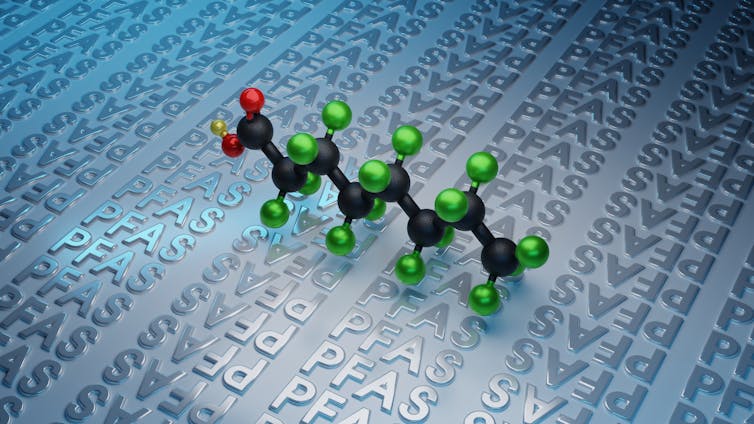
As awareness of toxic, synthetic chemical pollution from per- and polyfluorinated substances (PFAS) increases, more legal settlements in billion dollar amounts are being made between chemical companies and public water suppliers, both in the US and Europe.
In Korsør, Denmark, meat from an ecological community farm was polluted with PFAS from a firefighting training site located upstream of the grazing meadows. High levels of PFAS or forever chemicals (commonly in fire-fighting foams) have been found in local residents and children with decreased immune response.
In western Jutland, Denmark, PFAS chemicals have contaminated soil, groundwater and grass on meadows near the sea. Meat from grazing cattle contained such high PFAS levels that they could not, according to the Danish Veterinary and Food Administration, be sold for human consumption.
In Belgium and the Netherlands, sampling of sea spray aerosols has shown high concentrations of PFAS. This poses a health risk to beach users and swimmers who may swallow PFAS while in the sea.
This sea spray is a diffuse source of chemical contamination and is therefore much harder to monitor than a point source of chemical pollution, such as the effluent from a factory entering a river.
In Sweden, two cases of PFAS pollution have been brought to the local and regional court. In spring 2024, the Swedish Armed Forces was made to pay the municipal water company, Uppsala Water, for the cost of decontaminating the municipal source water from PFAS pollution – this PFAS came from legally approved chemicals used to make firefighting foams.
In a similar case in Blekinge, the Swedish high court sentenced a water company to pay damages to the people with elevated PFAS-levels in their bodies after drinking water contaminated with PFAS firefighting foams.
Despite different outcomes regarding who pays the fine, these two cases are very similar. In both cases, the Swedish Armed Forces, using legally approved chemicals for firefighting, have contaminated source water with PFAS. In both cases, citizens pay for the damages either through tax (in Uppsala) or through water fees (Blekinge).
There are 23,000 PFAS-contaminated sites in Europe alone – a region with just 20 PFAS manufacturers and some 230 factories using PFAS. The remaining sites are predominantly fire-fighting training areas, waste management sites and airports (where fire-fighting foams are often used). In addition, there is the diffuse spread and concentration of PFAS by sea spray formation.
So who is responsible for PFAS contamination? Is it the fault of international chemical agencies for prematurely approving and legalising the use of PFAS chemicals? Or perhaps it’s the chemical industry’s fault for developing products containing PFAS?
According to the “polluter pays principle”, polluters should pay for the pollution they cause, including the cost of measures taken to prevent, control and remedy any pollution.
In the case of PFAS, there is no clear polluter because the chemical manufacturers aren’t currently doing anything illegal. This polluter pays principle isn’t therefore applicable to PFAS. Instead, it is the tax payers and bill payers who suffer the damage and have to pay the price.
Responsibilities are being shunned. This could become a case of state-facilitated corporate crime, with states, politicians and authorities failing to regulate harmful business activities.
Next steps
To prevent further PFAS pollution, the laws that govern the production and use of PFAS chemicals must change.
A global ban on PFAS as a class of chemicals is urgently required. About 15,000 PFAS substances are in use. It’s possible that more than 7 million PFAS could be manufactured.
If we ban 100, 2,000 or 10,000 PFAS, the industry will simply shift to producing other PFAS chemicals. Since 2023, 200 PFAS have been banned by the EU based on a Swedish initiative – this only covers a small fraction of all PFAS. A ban of the entire PFAS group is urgently needed.
Another concern is the replacement of PFAS with chemicals that aren’t necessarily any more sustainable. So banning PFAS is not enough. Synthetic chemicals need widespread controls to reduce the production, use and disposal of hazardous substances – ideally, toxic chemicals should only be produced if there is no other possible alternative and if their use is essential.

The legal system must be more proactive. Legalising new chemicals needs to start cautiously and the process of approval for new chemicals needs to be more precautionary.
Rigorous testing that evaluates the long-term effects of chemicals on humans, animals and the surrounding environment should be carried out before chemicals come to market. Understanding how pollution infiltrates soil and groundwater, for example, is key as this is where many toxic PFAS persist.
Liability should be retrospective, meaning that the companies or authorities responsible for polluting the environment need to be held accountable, even if the use of a specific chemical was not illegal at the time.
This approach ensures that the real polluters have to pay the price. A ban today does not mean that the problem will disappear – existing pollutants need to be cleaned up as well. A robust legal system will ensure that the polluter pays for all of that.
Charlotte Jönsson Sparrenbom receives funding from VASYD and Formas.
Beth Parker is the Director of Morwick G360 Groundwater Research Institute, and Director of the University Consortium for Field-Focused Groundwater Research, at the University of Guelph. Beth has received research funding from NSERC, VASYD, ORF-RE, AWWA-RF.
Anna Thomasson does not work for, consult, own shares in or receive funding from any company or organisation that would benefit from this article, and has disclosed no relevant affiliations beyond their academic appointment.
This article was originally published on The Conversation. Read the original article.







